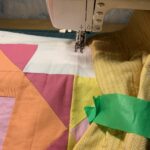Confession time. I have been a serial google image thief for a large portion of my internet life. I honestly never put much thought into it. If I can save this image then it must be OK to do? How else do you get images from the internet? This week’s class gave me some great, concrete information on where to find images, videos, and teaching material that are free and openly licensed:
Just as with all work, it is important to cite where you find your information and content. Images are no different. This is a valuable message to pass onto students. In the rush and excitement of engaging online, proper etiquette can be unfortunately forgotten. It is easy to forget that there are people behind those images who deserve credit and respect. There are lots of resources out there for public use and specifically geared towards educators. The very open nature of the current BC curriculum is exciting because it gives teachers lots of freedom to teach the way they want to, however, I also find it very intimidating because I don’t know where to start. I find myself doing a lot of google searches in an attempt to get some grounding as to where I should begin. I’m hoping I can look to some of these open resources to give me a jumping off point to create lesson ideas.
Privacy was another big topic this week. Having worked in schools before I was very aware of the consent needed when using virtual platforms with students. However, most of my experience has been with elementary school aged children, where adults handle most of the negotiating of privacy concerns. I’m wondering how as a teacher you can have meaningful conversations about this with middle school aged children, who often have more independence and choice in what they do on the internet.






